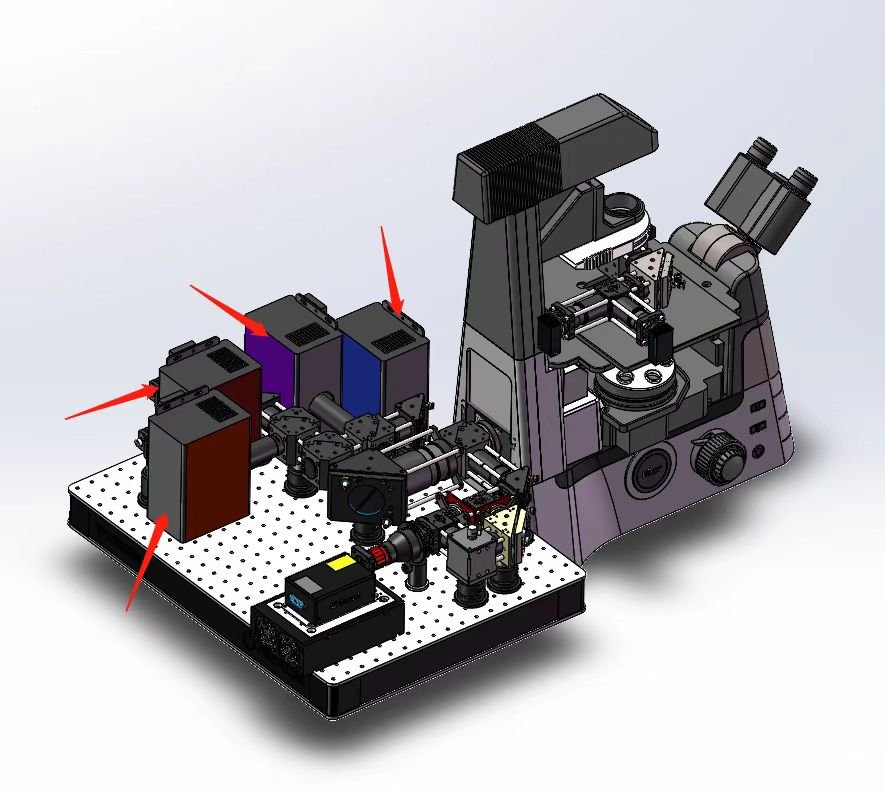Introduction
Digital Light Processing (DLP) technology, best known for powering high-definition projectors, has emerged as a game-changer in biotechnology. By combining rapid, programmable light patterning with micromirror arrays, DLP enables unprecedented control over biological processes at the microscale. From 3D bioprinting to optogenetics, this technology is unlocking new frontiers in research, therapy, and diagnostics. Let’s dive into how DLP is reshaping biotech innovation.
1. High-Resolution 3D Bioprinting
DLP’s ability to project UV or visible light patterns with micron-level precision has revolutionized 3D bioprinting. Unlike traditional extrusion-based methods, DLP-based printers use light to selectively cure photosensitive bioinks layer by layer. This approach:
Achieves resolutions down to 10 μm, critical for replicating vascular networks or neural tissues.
Preserves cell viability by minimizing mechanical stress during printing.
Enables multi-material structures, such as gradient hydrogels mimicking tissue interfaces.
Case Study: Researchers at Harvard’s Wyss Institute used DLP to print kidney tubule models with embedded endothelial cells, accelerating drug toxicity testing.
2. Optogenetics & Neural Control
In optogenetics, DLP systems project spatially and temporally controlled light patterns to activate or silence genetically modified neurons. Applications include:
Mapping brain circuitry by targeting specific neuron populations in vivo.
Restoring vision in retinal degenerative diseases using light-sensitive proteins.
Developing “brain-on-a-chip” platforms to study neurological disorders.
Innovation: A 2023 study demonstrated a DLP-driven optogenetic array that simultaneously modulated 1,000+ neurons in live zebrafish, revealing real-time neural dynamics.
3. Organ-on-a-Chip & Microfluidics
DLP technology accelerates the fabrication of microfluidic devices and organ-on-a-chip systems. By projecting UV patterns onto photoresists, it creates:
Complex 3D microchannels for mimicking blood vessels or lung alveoli.
Dynamic cell culture environments with programmable shear stress and nutrient gradients.
Sensors integrated into chips for real-time metabolite detection.
Breakthrough: A Stanford team developed a DLP-printed liver-on-a-chip with bile duct structures, improving drug metabolism prediction.
4. Single-Cell Analysis & Manipulation
DLP’s precision enables single-cell-level interventions:
Photopolymerization traps: Isolate individual cells using light-cured hydrogels for genomic analysis.
Targeted drug delivery: Use focused light patterns to trigger nanoparticle drug release in specific cells.
Cell sorting: Direct laser-induced cavitation to separate healthy and cancerous cells without labels.
5. Customized Tissue Engineering
DLP-driven dynamic photomasks allow real-time adjustments to scaffold designs, supporting personalized medicine:
Patient-specific bone grafts with porosity tailored for optimal osseointegration.
Cartilage implants with zone-specific stiffness gradients mimicking natural joints.
4D bioprinting: Structures that self-fold into predefined shapes (e.g., heart valves) under stimuli.
6. Accelerated Drug Discovery
DLP systems streamline high-throughput screening:
Project thousands of light-defined microenvironments to test cell-drug interactions in parallel.
Print 3D tumor spheroids with controlled hypoxia zones for anti-cancer drug validation.
Generate gradient concentration chips to identify optimal drug doses rapidly.
Challenges & Future Directions
While promising, DLP faces hurdles:
Biocompatibility: Minimizing UV-induced DNA damage in sensitive cells.
Speed-resolution trade-off: Balancing print speed with subcellular resolution.
Material limitations: Developing bioinks that cure efficiently under low-intensity light.
Future advancements may integrate AI-driven DLP systems to autonomously optimize light patterns for complex tissues or combine DLP with CRISPR tools for spatially controlled gene editing.
Conclusion
DLP technology is bridging the gap between engineering precision and biological complexity, offering tools to decode life’s intricacies at unprecedented scales. As biotech embraces light-driven innovation, DLP stands poised to redefine everything from regenerative medicine to brain-machine interfaces—proving that sometimes, the smallest mirrors can reflect the grandest possibilities.
References
Science Advances (2022): "DLP-printed renal tubules for personalized nephrotoxicity screening."
Nature Methods (2023): "Large-scale optogenetic neural control using DLP arrays."
Lab on a Chip (2023): "Liver-on-a-chip with bile duct integration via DLP fabrication."


Share:
The Versatile World of UV Projectors: Illuminating Innovation Beyond Visible Light
Understanding Robot Joint Modules: The Backbone of Robotic Motion